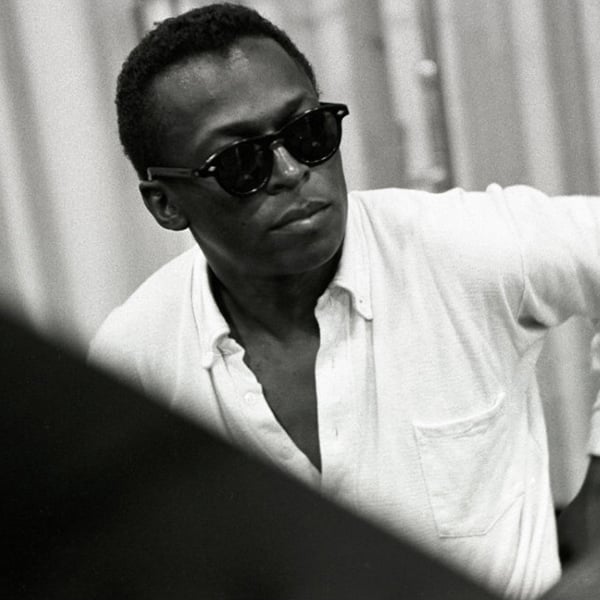
If Miles and Gil Evans had done nothing more together than “Summertime,” their collective reputation would be assured. Miles’ singularly plaintive reading of the tune, urged on by Evans’ harmony response line that repeats, and repeats, and repeats the same seven notes—makes for one of the most hip renderings of one of the most familiar melodies in the Great American Songbook. (“How many singers does it take to sing ‘Summertime?’” goes the set-up. The punch-line: “Apparently, all of them.”)
The secret behind Miles’ and Evans’ reworking of the over-worked tunes from the Gershwin brothers’ jazz opera lies in a simple restructuring of priorities: a languid mood and an overriding feeling of restraint take precedence over the compositions themselves. Melodies and song forms are made fluid and restructured. Bright colors, fresh textures, and new emotions are revealed: the bittersweet mood of “Bess, You Is My Woman Now.” The hovering, barely moving effect of “I Loves You, Porgy.” The subtle groove of “It Ain’t Necessarily So.” “Gone,” a big-band flag-waver that excites with its ecstatic drum fills. The suave “My Man’s Gone Now” that comes off with a sly feel that Bess might be OK with the fact that she’s alone.
Producer Cal Lampley recalls suggesting the idea of covering Porgy and Bess from an idea he recalled having while working on the Miles Ahead sessions. “I called Miles…he said, ‘Cal, I’m sitting here trying to think of doing something with my wife and you’re calling me with this shit.’ and hung up! Uh-oh, I guess I blew that. Then ten days later he called me and said, “Cal, that Porgy and Bess idea’s a good one – let’s get started . . .” Miles himself later credited his wife, “Frances [Taylor] was dancing in Porgy and Bess at City Center. . . that’s where I got the idea.”
Porgy and Bess boldly took ideas that reversed the bebop esthetic—instead of navigating one’s solo with rapid-fire assuredness from one chord to the next and next, Evans’ approach to the harmonies of Porgy and Bess was to slow down the rate of those shifts—the “changes” jazz musicians often speak of—and allow the soloist to stay on one modality (hence “modal jazz”) and invent his own melody and mood.
To Miles’ ears, by the late 1950s, the “music [had] gotten thick. Guys give me tunes and they’re full of chords. I can’t play them.” Miles was talking to the jazz journalist Nat Hentoff, for the short-lived Jazz Journal magazine. It was 1958 and the article was titled “An Afternoon with Miles”—but it could be called “A Modal Manifesto.” The trumpeter explained why this new way of playing held a fresh, uncluttered appeal.
When Gil [Evans] wrote the arrangement of “I Loves You, Porgy,” he only wrote a scale for me to play. No chords. [It] gives you a lot more freedom and space to hear things . . . I wrote a tune recently that’s more a scale than a [melodic] line . . . when you go this way, you can go on forever. You don’t have to worry about changes [chords] and you can do more with the line [melody]. It becomes a challenge to see how melodically inventive you are.
This was a rare instance of a musician describing not just the how of a new musical style, but the why, which is more often left unexplained. Modal jazz, restful and relaxing, swept away the clichés that Miles disliked, while still holding challenge for soloists. Kind of Blue, built on the same foundational idea, was just around the corner.

















